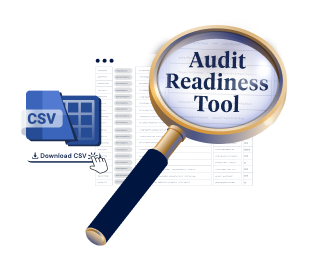Standard 1 of the strengthened aged care standards sets the tone for how care and services must be tailored to each individual’s unique identity, values, and life experience.
It promotes a rights-based, individualised approach to care that empowers older people to feel respected, heard, safe, and in control of their care. This standard expects providers to go beyond task-focused care and embed dignity, choice, inclusion, cultural safety, and autonomy into everyday practice.
Providers must ensure that staff are equipped to meet the preferences of older people, enable informed decision-making, support diversity and independence, and build trusted, respectful relationships. These expectations underpin the care experience and are foundational to every other standard.
What Training Is Required and Why?
Training under Standard 1 must build staff's knowledge, skills, ability, attitudes, and interpersonal behaviours that reflect empathy, cultural humility, and respect. Training on this standard is critical for all staff. For example, it should also address the governance and system-level responsibilities for ensuring that person-centred care is encouraged and reliably delivered.
Key Training and Capability Requirements
The following capabilities need to be developed across the workforce to meet Standard 1, The Individual:
Standard 1: Key Training Requirements
- Understanding of dignity, autonomy, and the right to privacy
- Recognising and supporting cultural, spiritual, gender and life diversity
- Effective communication tailored to individual preferences and impairments
- Providing trauma-aware and healing-informed care
- Supporting informed choice and decision-making, including the dignity of risk
- Recognising abuse, neglect or discrimination and responding safely
- Upholding professional boundaries while building trust
These training goals are essential because:
- Respect and individualisation are core audit themes across all outcomes
- Failure to uphold privacy, dignity or cultural safety is frequently linked to non-conformance
- The standard explicitly links training to safe and person-centred care delivery (refer to Outcomes 2.8, 2.9)
Outcome 1.1: Person-Centred Care
This outcome expects care to reflect the older person’s identity, background, culture, and life story, tailored to their goals and preferences.
Key training focus areas for Outcome 1.1 include:
- Person-centred care principles and values
- Building trusting relationships and effective partnerships with older people and families
- Delivering culturally safe and inclusive care
- Recognising trauma and applying trauma-informed care practices
- Using life-story work to inform care planning
Outcome 1.2: Dignity, Respect and Privacy
This outcome centres on the right to be treated with kindness and respect, to be free from harm, and to receive care that protects personal privacy.
Training topics needed to meet Outcome 1.2 include:
- The aged care rights framework and Code of Conduct
- Preventing, recognising and reporting abuse, neglect and discrimination
- Delivering private and respectful personal and intimate care
- Supporting safe relationships and the expression of sexuality and gender
- Understanding the role of informed consent when addressing privacy and safety
Outcome 1.3: Choice, Independence and Quality of Life
This outcome is about enabling people to live meaningful lives, supported by informed choice and decision-making that balances risk with autonomy.
Education priorities under this outcome include:
- Supported decision-making and the role of substitute decision-makers
- Informed consent processes and documentation
- Communicating in ways that promote understanding and participation
Enabling positive risk-taking to support autonomy and quality of life - Identifying and addressing barriers to independence and wellbeing
Outcome 1.4: Transparency and Agreements
This outcome ensures that older people understand and consent to the agreements and financial arrangements related to their care.
Training areas for Outcome 1.4 include:
- Explaining agreements, rights and financial information clearly and in plain language
- Documenting informed consent to care and fee changes
- Supporting people to access advice before entering into agreements
- Communicating fees and services in culturally and linguistically appropriate ways
- Ensuring consistency between agreements and actual care delivery
Audit Evidence Items - Standard 1 Training and Education
To demonstrate conformance with Standard 1 during an audit, providers must show that education and training efforts are systematic and effective.
The table below summarises the types of evidence auditors may look for to confirm that training and education under Standard 1 are in place, embedded in practice, and making a measurable impact on the quality of care provided.
| Evidence Type | Examples |
|---|---|
| Documents and records | Training matrix, attendance logs, policies on cultural safety, trauma-informed care, and consent. |
| Care planning records | Notes indicating care is tailored to cultural, spiritual, and linguistic needs. |
| Worker competency | Assessment tools confirm knowledge of privacy, consent, dignity, and rights. |
| Management feedback | Interviews confirming training strategies align with organisational policy and audit themes. |
| Individual Feedback | Statements indicating they feel known, respected, and able to make choices. |
| Observations | Staff seen to be using inclusive language, respecting privacy and engaging empathetically. |
| Complaints data | Documentation that training needs were identified in response to incidents, complaints or feedback. |

Ensure your organisation is prepared for your first audit under the strengthened Standards.
L&D Guide to Training on Standard 1
To effectively deliver on the intent and outcomes of Standard 1, training must be purposeful, targeted, and responsive to regulatory and individual staff needs.
Here are key strategies for implementation:
- Begin by identifying the most critical gaps: Conduct a needs assessment to identify gaps in knowledge, skills, confidence, or practice, especially in trauma-informed care, privacy, and culturally safe communication.
- Tailor training to specific job roles: Assign training carefully by job role, facility, and function to avoid a ‘spray and pray’ situation where everyone gets training without a clearly identified and validated need.
- Choose engaging methods that promote practical application. For complex areas like dignity of risk, abuse recognition, and cultural humility, use reflective and scenario-based learning.
- Ensure foundational principles are well understood from the outset: Make training on person-centred and rights-based care mandatory at induction and refreshed annually.
- Measure and improve through feedback and data: Evaluate learning effectiveness through feedback, performance reviews, and care experience outcomes.
List of Ausmed Modules on Standard 1: The Individual
The following modules from the Ausmed Library help you meet the education and training requirements of Standard 1.
Explore the full library here.
| Ausmed Module | Duration (minutes) |
|---|---|
| Standard 1: The Person | 10 |
| Communicating in Aged Care | 24 |
| Person-Centred, Rights-Based Care for the Older Person | 12 |
| Cultural Safety in Healthcare | 25 |
| Communicating in Aged Care | 24 |
| Culturally Safe, Trauma-Aware and Healing-Informed Care | 25 |
| Intimacy and Sexuality in Aged Care | 30 |
| Person-Centred, Rights-Based Care for the Older Person | 12 |
| LGBTIQ+ in Aged Care | 22 |
| Understanding Professional Boundaries | 5 |
| Partnering With Older People | 12 |
| Serious Incident Response Scheme (SIRS) | 40 |
| Privacy, Confidentiality, Dignity and Personal Information | 11 |
| Communicating in Aged Care | 24 |
| Responsible Information Delivery | 9 |
| Consent to Treatment | 34 |
| Advocates and Language Services | 10 |
| Dignity of Risk | In development |
| Documentation in Aged Care | 25 |
| Transitions of Care | In development |



